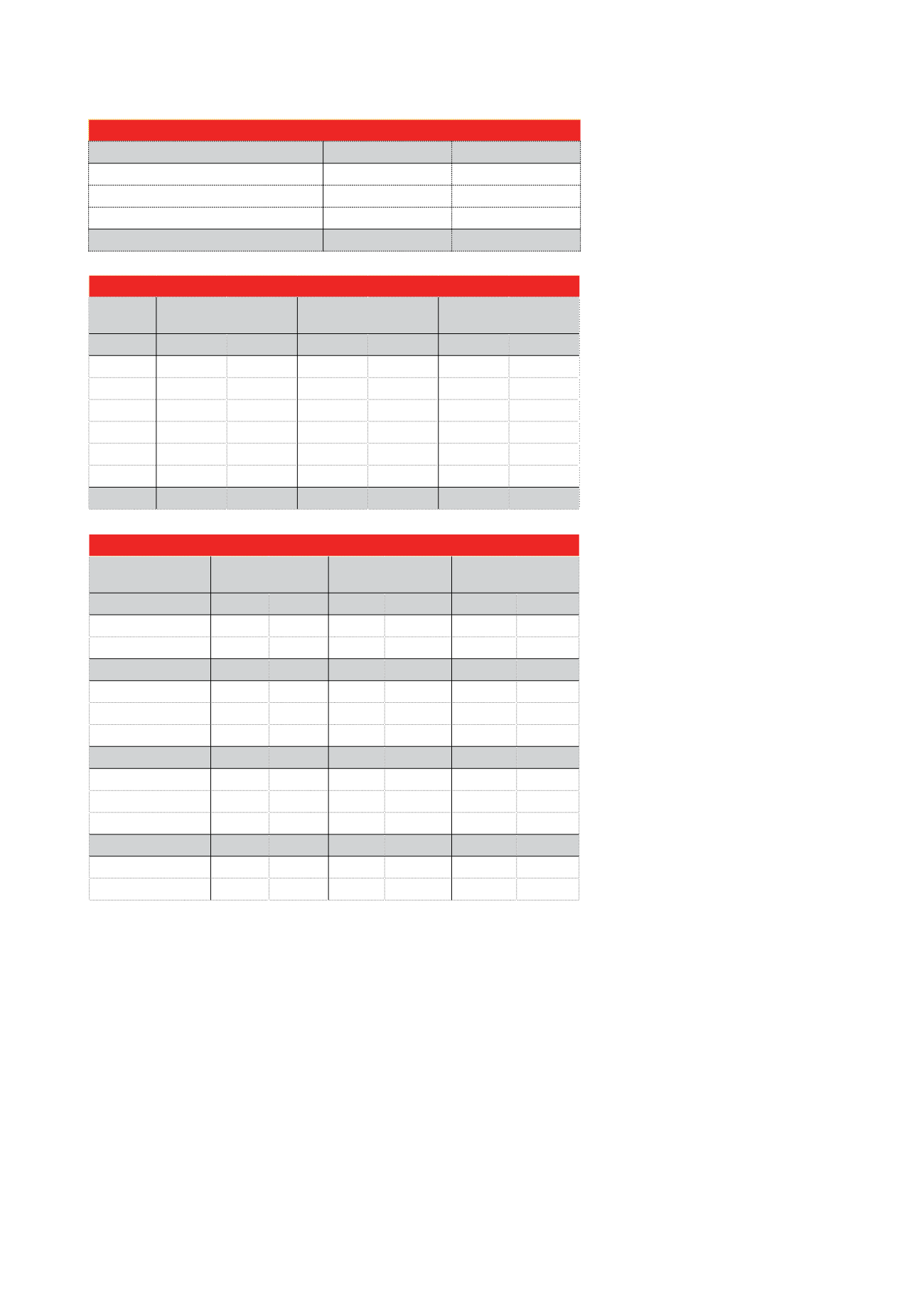
have all been used to dry screen coal
in some cases down to 3 mm.
Vibrating screens for dry screening
of raw coal can broadly be placed
into the following categories:
n
n
Circular motion inclined screens,
which can have three decks.
n
n
Multi-slope or banana screens,
which are normally limited to
two decks.
n
n
Flip flow screens, which are
limited to single deck.
n
n
Roller screens, which are limited
to a single deck.
n
n
High-frequency screens, which
are normally limited to a single
deck.
Screen surfaces are made of
stainless steel, mild steel, polyurethane
and rubber. The size and shape of the
opening and the material of
construction of the screen surface
depends upon the application. Wear
life, blinding characteristics, opening
size, percentage of open area, size and
shape of particles in the feed and
screening efficiency requirements are
some of the governing factors.
Wet separation of raw coal is
normally carried out in different
sizes to prepare the feed for the
following processing circuits:
n
n
9 mm – 12 mm with a top size
of up to 300 mm to wash it in a
coarse coal circuit.
n
n
50 mm x 1 mm (or 0.50 mm) to
wash it in heavy media cyclones.
n
n
1 mm (or 0.5 mm) x 0.15 mm to
wash it in spiral concentrators or
reflux classifier.
n
n
0.15 mm x 0.044 mm (or x 0) to
concentrate in froth flotation
cells.
Circular motion, horizontal,
multi‑slope or banana screens are
used to size raw coal for a coarse
coal circuit.
Horizontal and multi-slope or
banana screens in combination with
sieve bends or static sieves are used
to size raw coal for heavy media
cyclone circuits. Use of a static sieve
or sieve bend ahead of the vibrating
screen can be replaced with an
addition of 1.3 m extra length to the
vibrating screen.
Normally, use of 380 mm dia.
classifying cyclones to separate
-0.15 mm size fraction from 1 mm
(or 0.5 mm) x 0 mm raw coal is the
optimal way to prepare the feed for
spirals and reflux classifiers.
Cyclone underflow consisting of
+0.15 mm and misplaced -0.15 mm
size fraction can be diluted with
water and treated on a sieve bend
with 0.25 mm opening, to remove
ultrafine heavy clays, if present in
significant amount in raw coal.
In case there is a need to remove
-0.044 mm size fraction from the
feed to the flotation cells, 150 or
250 mm dia. classifying cyclones are
used. Normally, underflow of
classifying cyclones will contain
45% – 50% of -44 µm material in it.
Vibrating screens in combination
with sieve bends and/or static
screens are used to drain and rinse
the media from refuse and clean coal
along with the sizing of clean coal to
produce stoker coal and other
speciality products. Again, an
additional 1 m in length of a
Table 1. Dense media vessel circuit (feed: 2.4 air-dried moisture)
Size
% Wt
% Ash
+ 1
1
/
4
in.
25.19
86.75
1
1
/
4
in. x
3
/
8
in.
65.31
77.47
3
/
8
in. x 0
9.5
50.05
Composite
100
77.2
Table 2. Heavy media vessel feed and discharge
Feed
(1
1
/
4
in. x
3
/
8
in.)
Product – B/deck
(3.24 air-dried moisture)
Refuse – B/deck
(2.07 air-dried moisture)
Gravity
% Wt
% Ash
% Wt
% Ash
% Wt
% Ash
1.40 float
13.23
4.37
94.06
4.35
1.17
4.57
1.50 float
0.56
21.08
3.98
20.26
0.08
22.06
1.60 float
0.45
30.91
1.03
30.57
0.09
29.94
1.70 float
0.65
40.13
0.35
39.74
0.19
40.27
1.80 float
0.78
47.63
0.18
47.58
0.55
45.12
1.80 sink 84.33
90.13
0.40
79.17
97.92
90.84
Composite 100
77.47
100
5.75
100
89.37
Table 3. 15 in. raw coal classifying cyclone samples
Feed
(15.82% solids)
Underflow
(41.71% solids)
Overflow
(5.97% solids)
Size
% Wt
% Ash % Wt
% Ash
%Wt
% Ash
+1.5 mm
3.85
26.58
5.09
23.18
0
0
1.5 mm x 1 mm
8.69
27.60
10.31
20.41
0
0
+ 1 mm composite
12.54
27.29
15.40 21.33
0
0
1 mm x 28 mesh
16.83
25.94
20.20 22.12
0.17
6.81
28 x 60 mesh
21.81
23.91
31.14
17.49
0.89
4.38
60 x 100 mesh
7.88
20.61
9.77
18.39
2.09
3.73
+100 mesh composite 59.06
24.77
76.51
19.60
3.15
4.08
100 x 200 mesh
8.12
23.16
9.52
27.76
18.32
5.54
200 x 325 mesh
4.14
25.72
2.83
47.21
6.46
5.64
325 mesh x 0
28.68
53.98
11.14
60.32
72.07
55.13
Composite
100
33.05
100
25.69
100
41.24
1 mm x 100 mesh
46.52
24.09
61.11
19.16
3.15
4.08
100 mesh x 0
40.94
45.01
23.49
45.54
96.85
42.45
28
|
World Coal
|
June 2016


